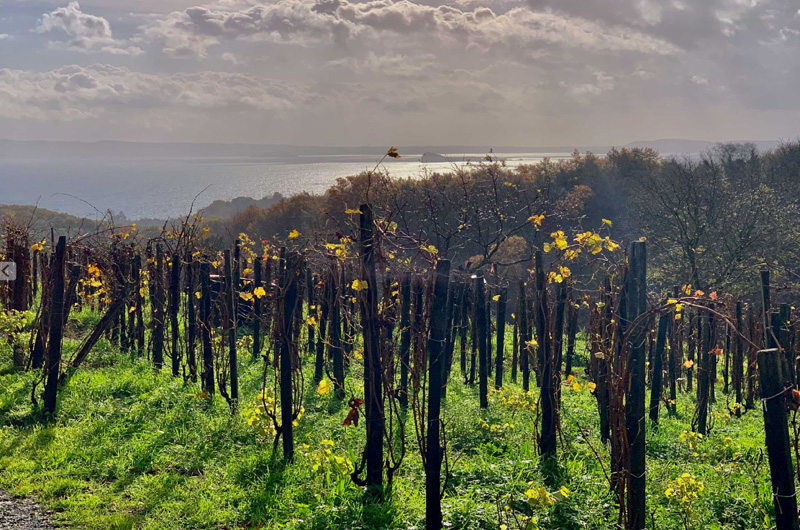PLEASE, MEET THE AGRITECH PARADOX
Stanford University has calculated that, so far, CLIMATE CHANGE has caused a decline in farming productivity by 21%. Which is equivalent to wiping out ANY, agricultural, improvement to feed the world, made in the last 60 years. Viticulture is one of the most exposed cultivars to such emergent dynamics. And the value-chain of wine, the 3rd most used drink in the world, is consequently highly impacted.
The paradox of Agritech solutions is that they can be tremendously effective, but they hardly get adopted by small producers (which are the majority): they’re expensive, require tech know-how, and poorly befit real cases.
With TERRAGRID, our Agritech solution, we want to make such methodologies, ACTUALLY, accessible to farmers.
We have chosen to focus on viticulture and wine production, a cultivar and an activity exceptionally important for the EU, but also worldwide. Considering both the problems that characterize this type of agricultural production and the new challenges it is called to face.

VALUE PROPOSITION
The advantages of such a solution cover several perspectives. Through a multi-source approach with A.I., and considering the agricultural field (the vineyard) as a complex system, we increase its value by implementing a mathematical model of the vineyar aimed to improve the vineyard-value per hectare via performance, in two complementary ways:
- Increasing produce by enhanced plant health, thanks to a monitor & forecast methodology that allows proactive actions.
- While dropping costs through the optimization of the necessary treatments to be performed on the field, just where and when they are actually needed. Enabling major savings in resources results in lowering costs, workloads and the environmental impact.
- In addition to this, we enable a much better risk control and an easier transition to organic production.
TERRAGRID also works as an extremely valuable tool for the technician (agronomist/oenologist), not only for the farmer-producer.

We deliver value in terms of boosting field-performance, combining: enhanced productivity (up to +15%) AND lower costs (up to 1/3 less).Our goal is to improve the breakeven and net profit margin of the farmer, and a monitoring/simulation and traceability tool for the technician.

Our modular solution is geographically replicable, with an international perspective, and it is scalability-ready to other cultivars.
In a nutshell: with TERRAGRID, the integrated Agritech solution we are developing, we want to support farmers and agricultural technicians (agronomists etc.) in improving productivity, profitability, and taking care of complexity. While minimizing their impact via less polluting and more sustainable actions, and outputs. We are developing it with a data-driven integrated approach. Where multi-sourced data feed a Digital Twin of the field.
SOME INFO ON CLIMATE CHANGE-DRIVEN CRITICALITIES
1) Assumptions
What worries most the local grape production chain from northern to southern of Italy (just like in other parts of the EU and worldwide where viniculture is practiced) is the climate change, increasingly bizarre and atypical, influenced by global warming. As a result, in these years we are witnessing an increasingly major instability in wine production, in some cases extremely limited because of serious weather phenomena.
According to the Italian Meteorological Society, Italy’s wine-growing area subject to drought currently accounts for 68%, in 2030 it will be 89%, and in 2050 it will be 99%. The Institute of Biometeorology of the CNR has also shown that the main problems of viticulture in 40 years from now will be related to drought, especially in the South of the Mediterranean, and also to a higher incidence of late frosts, despite the constant increase in temperatures.
That global warming is causing important effects on agriculture and in particular on the wine sector is demonstrated by last two years’ harvest data, with the strong production decrease recorded by Italy, equal to 20% less than 2016, just because of some harmful climatic effects such as April frosts and the great drought occurring starting from May.
2) Proven side-effects
Two main types of effects of the climate change affect viniculture (as well as other cultivars):
A) Direct effects: water/temperature stress
When the plant begins to perceive a situation of stress, it activates a series of mechanisms to limit at the most the movement of liquids towards the leaves and the transpiration through the stomata, by closing them. Some varieties, however, do not succeed at all, the stomata go into crisis and remain open instead of closing with the opposite result to the one needed. This is the situation that experienced wine makers translate in the expression: “the vines are in stall”. But the problem is deeper: the heat, beyond a certain limit, endangers most of the plants of our climate range. The stomatal system goes into crisis beyond 35 degrees. Moreover, the particular conditions of the Mediterranean used to cause a situation of slight water stress that induced an accumulation of defence-substances in the berries, which are coincidentally convenient to us as aromatic, phenolic, etc. ones. Unfortunately, the data of recent years indicate that we are moving away from the perfect conditions for which the Mediterranean was famous and summer stress is increasingly a problem, so as to compromise production in areas when there’s water shortage. Furthermore, in search of moisture the roots penetrate the soil deeper. Even though this can be positive for aroma enrichment, it definitely makes vary unpredictably the quality/quantity of the harvest.
B) Indirect effects: increase of diseases and pests
Unruly temperatures and climate of thess last years, in particular: more than abundant rainfalls, almost exceptional, hailstorms, led to the spread of diseases such as downy mildew (peronospora), caused by parasites that get the grapes to rot. Also the moth and the codling moth (tignola, tignoletta), with this climate are very active, their punctures combined with sudden summer rains unleash important attacks of botrytis.


